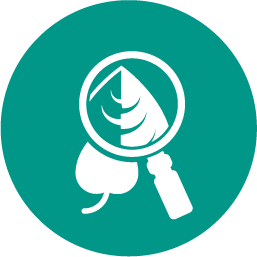Read the excerpt from act i, scene i of romeo and juliet.
yet tell me not, for i have he...

English, 24.01.2020 22:31 Kingdcn6261
Read the excerpt from act i, scene i of romeo and juliet.
yet tell me not, for i have heard it all.
here’s much to do with hate, but more with love:
why then, o brawling love! o loving hate!
o any thing! of nothing first create.
o heavy lightness! serious vanity!
mis-shapen chaos of well-seeming forms!
feather of lead, bright smoke, cold fire, sick health!
still-waking sleep, that is not what it is!
this love feel i, that feel no love in this.
dost thou not laugh?
the oxymorons in romeo’s dialogue emphasize
a) the anger he feels toward a certain woman.
b) his certainty about his romantic fate.
c) the extreme emotions that he is feeling.
d) his confusion about benvolio’s advice.

Answers: 2


Another question on English

English, 21.06.2019 17:40
You need to start an experiment and the instructions are to mix 2 g of sodium bicarbonate with 50 ml of distilled water and then mix the solution. describe what lab apparatus you would use and what safety precautions you must observe when completing this experiment.
Answers: 1

English, 21.06.2019 23:00
Now pick a section from chapter 1 of the call of the wild in which buck is interacting with another character. imagine that section narrated in first person point of view from one of the character's perspective, and rewrite it in the space below, attempting to use a similar writing style as the original author. then, in a second paragraph, consider this: are you able to explore some of the same ideas and themes when viewing the situation from the character's first person point of view, as compared to when it is narrated from london's third-person limited point of view? explain. your response should be be about 150 words in total.
Answers: 3

English, 22.06.2019 03:10
How are the characters of tablin and keyn revealed in this excerpt from "the guard" by simon dunbar? a. indirectly through dialogue and by thoughts and actions b. directly through a narrative description c. indirectly through dialogue "where's my horse? " keyn asked. tablin looked around the dirt courtyard. he tried to peer through the shadowy arches of the flowing barrel. he even twisted in his saddle to look across the merchant's bazaar, past tents and warehouses filled with goods. "i don't know," he said. "did you leave it in your mouth? it's the only place i can think of that's big enough." keyn laughed; something got stuck in his throat half way, and he coughed for breath. "i can see you're good to go,” tablin observed as keyn struggled to clear his throat. “go get your horse yourself before i take the job and leave you to rot in the flowing barrel."
Answers: 2

English, 22.06.2019 04:40
Adapt the speech you delivered in lesson 2 to an audience of professionals, teachers, and parents. the audience expects a more formal delivery. your listeners also expect you to use media such as images and audio to make your speech more convincing and easier to understand. your assignment should include the following elements: -at least four sources to back up your ideas -media elements to illustrate your ideas -changes to both the style and content of the speech to make it more appropriate to the audience -citations that follow mla guidelines as you revise your presentation, research and cite at least four sources. at least two of these sources must provide supporting evidence, such as charts and graphs or quotes from newspapers or other credible sources. the other two sources can provide material to grab the audience's attention — for example, photos that your audience visualize what you're talking about or music that sets the mood. you can also create original images, but these will not count as sources. here are some types of media that you may use to either show evidence or move the audience: quotes tables, charts, and graphs images video audio (including music) mix up the types of media you use so that no medium is used more than twice. take care that all your sources contribute to your speech in an obvious way. they should either back up what you're saying or make your ideas easier for your audience to understand logically or emotionally. avoid visual aids that are off topic or confusing. ask yourself these questions as you revise: am i still fulfilling the requirements of the speech i gave in lesson 2? is my speech still about a theme in franklin roosevelt's four freedoms speech? do i connect that theme to my own life and to a current issue? are my sources credible and relevant? will they convince an audience of parents, teachers, and professionals? do my media elements enhance my speech? do they set the mood, explain something difficult, or offer convincing proof? do i avoid media elements that are more distracting than ? did i cite my sources according to mla guidelines? did i check my works-cited page against sample works-cited pages to make sure it's correct?
Answers: 2
You know the right answer?
Questions








Physics, 09.08.2019 03:20

Physics, 09.08.2019 03:20

Physics, 09.08.2019 03:20

Physics, 09.08.2019 03:20


Physics, 09.08.2019 03:20

Physics, 09.08.2019 03:20

Physics, 09.08.2019 03:20

Physics, 09.08.2019 03:20



Physics, 09.08.2019 03:20



